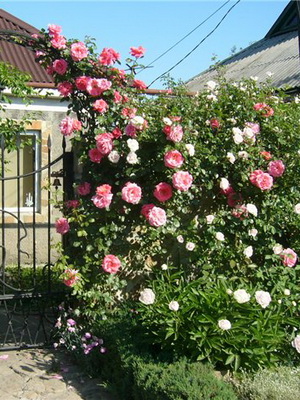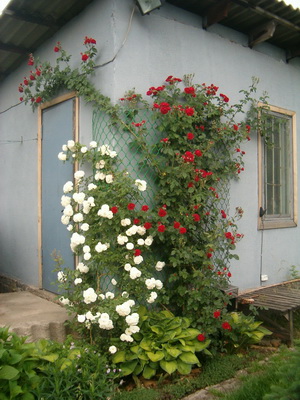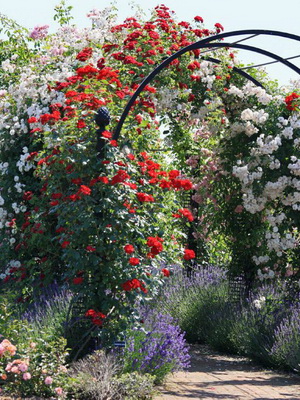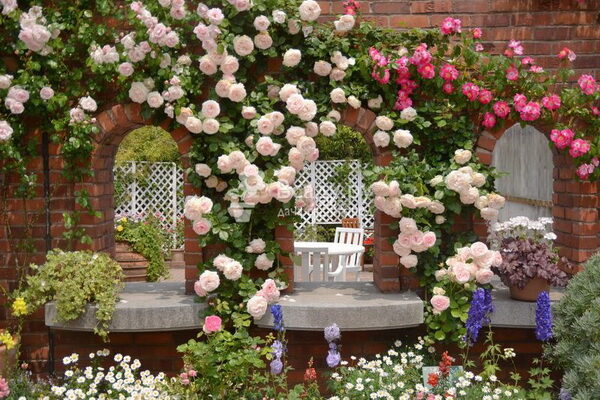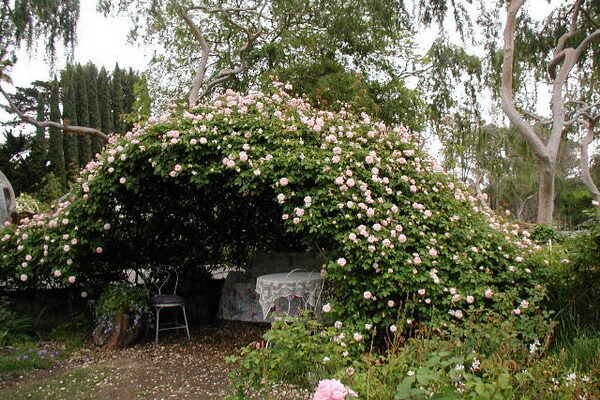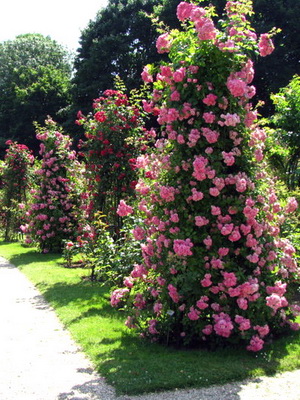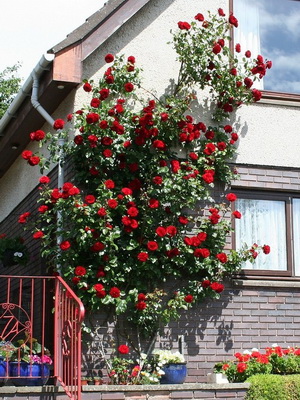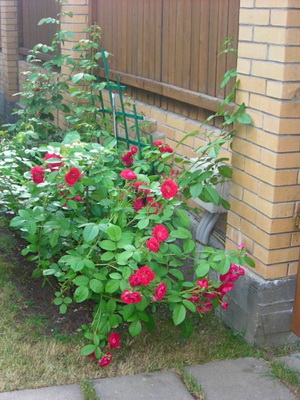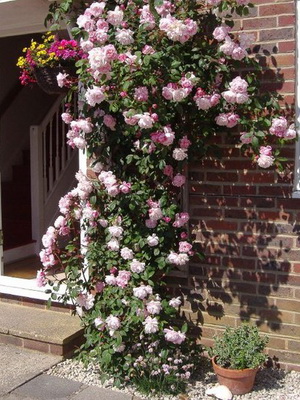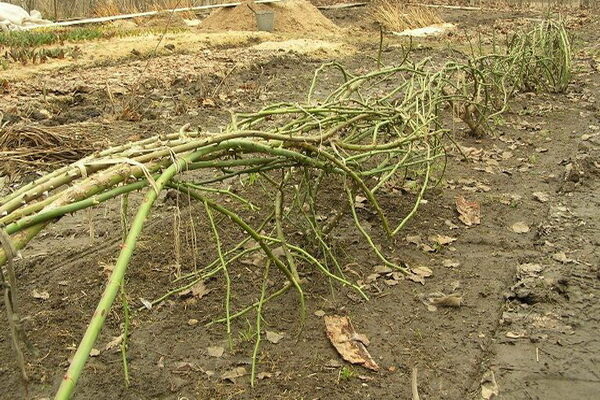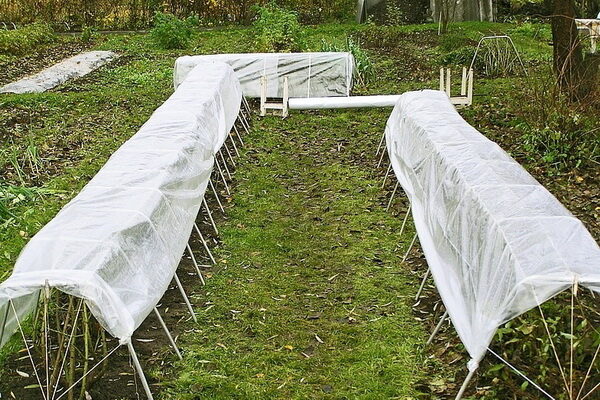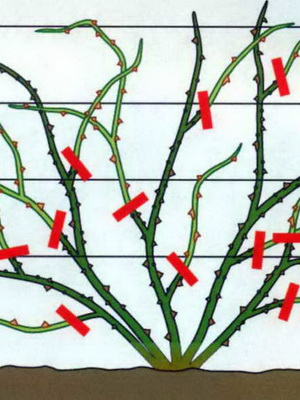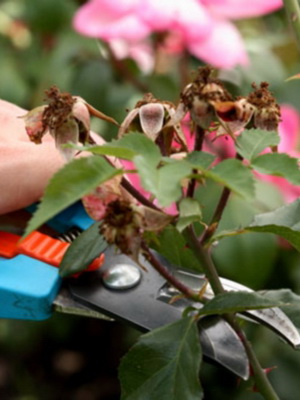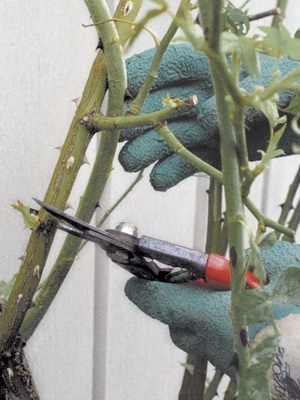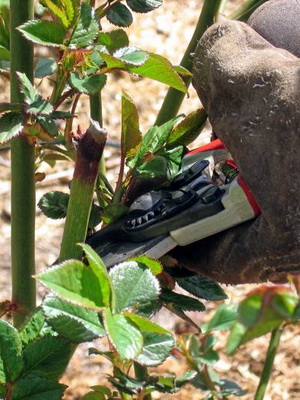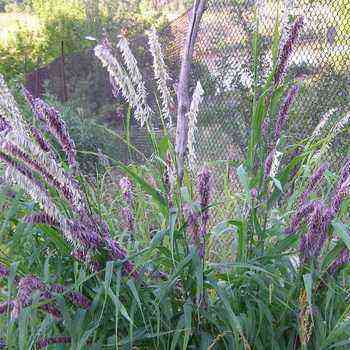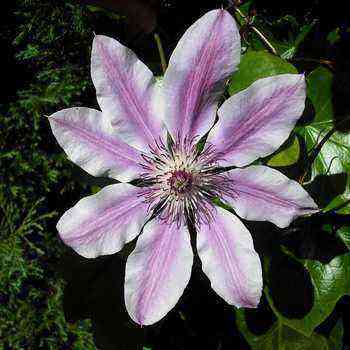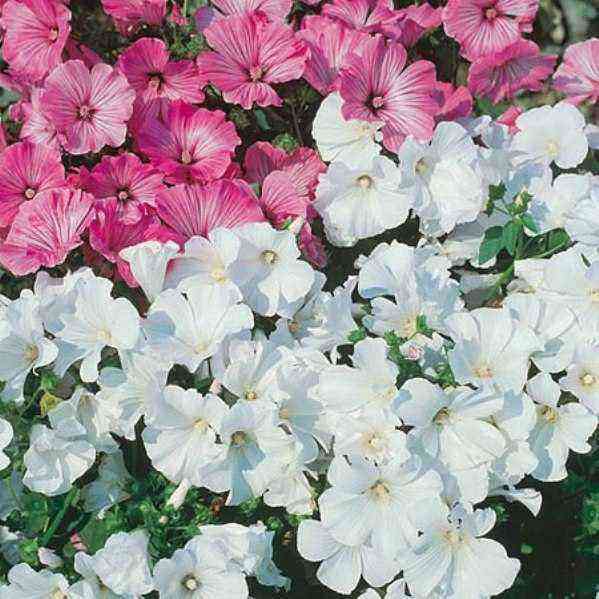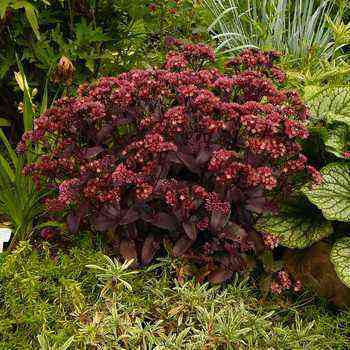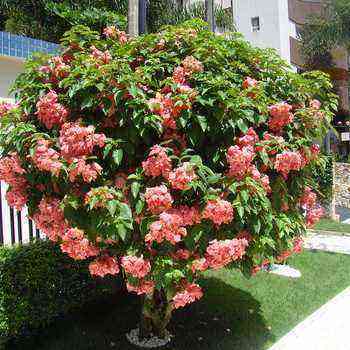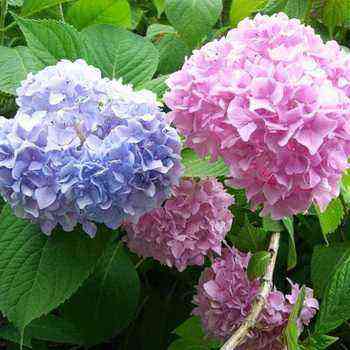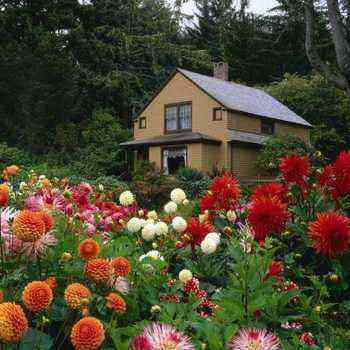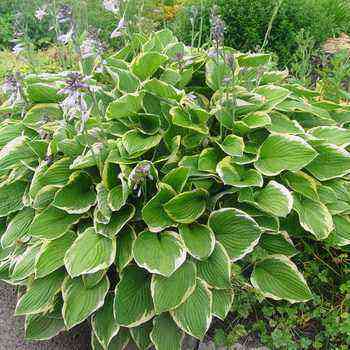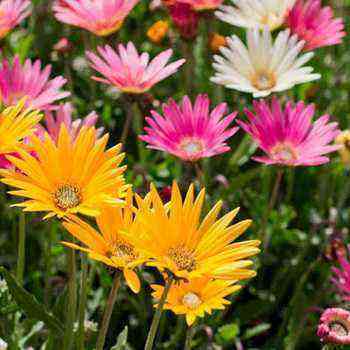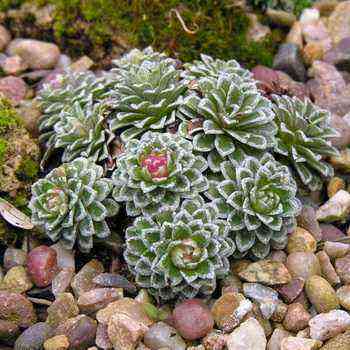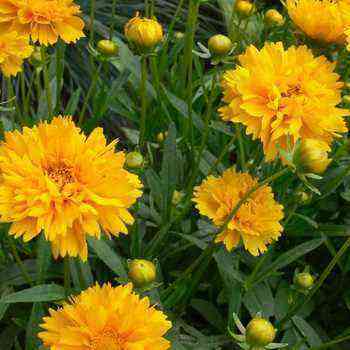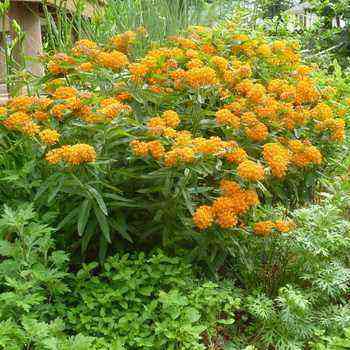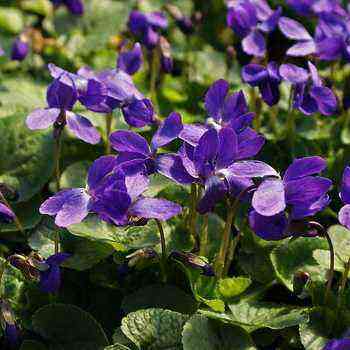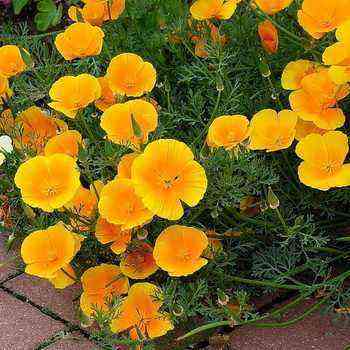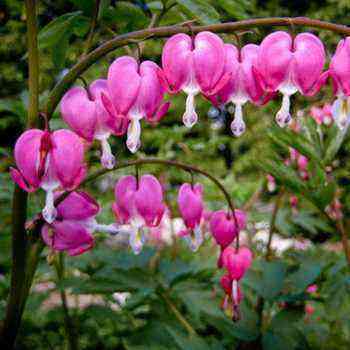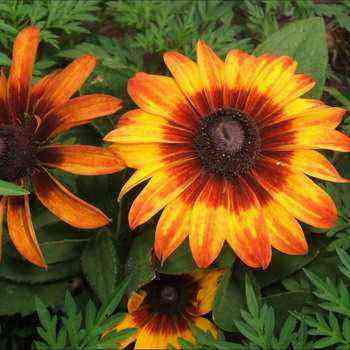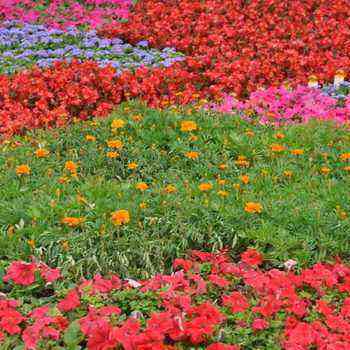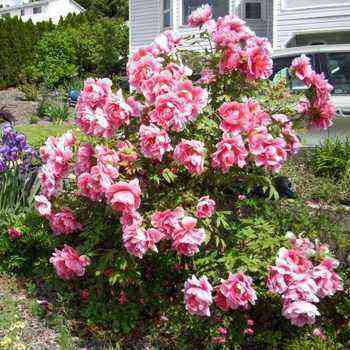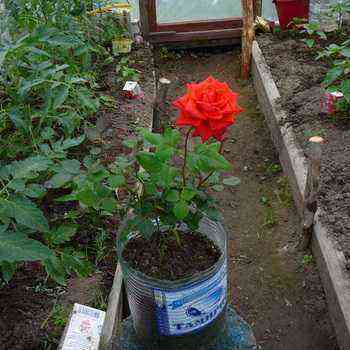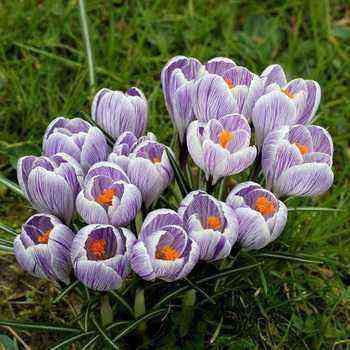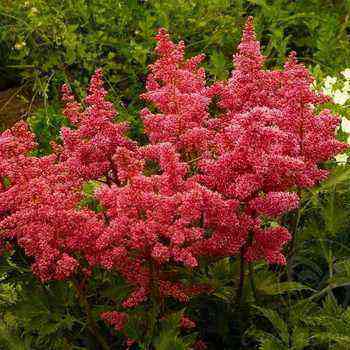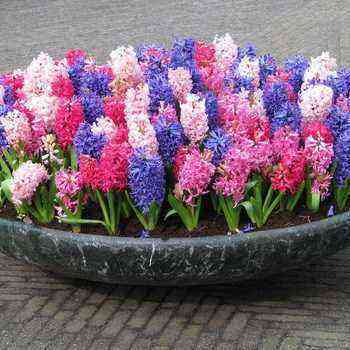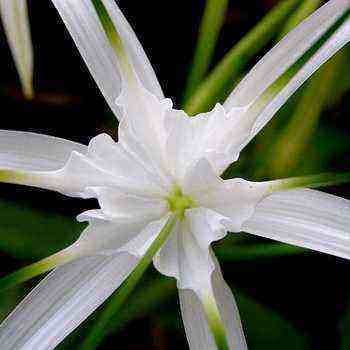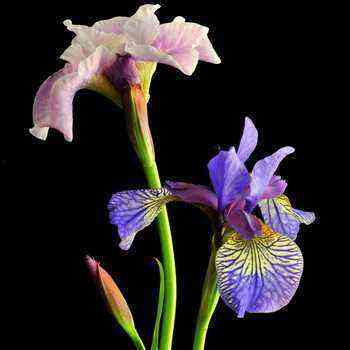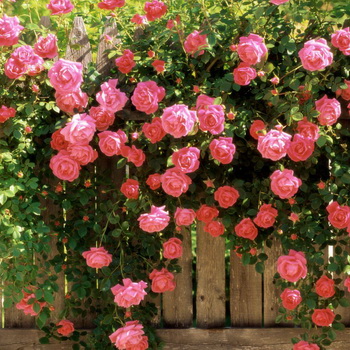
Forms such as shrubs, park, hybrid tea, grandiflora and floribunda roses are universal: they can be included in flower beds or planted in curtains on the lawn. Polyanthus and miniature roses are used as a border or container culture.
And ground cover roses are, perhaps, only suitable for large gardens and parks. Their purpose is to close and strengthen the soil.
Climbing roses in garden design (with photo)
Climbing roses are ideal for planting near poles, pergolas, arches. Of course, these forms can grow as a spreading bush, but in this case they will not show all their power and beauty.
As a vertical when growing climbing roses, delphiniums and foxgloves are classic additions. Moreover, if you need to create contrast or deepen the space, choose blue delphiniums. Monochrome compositions with delphiniums and foxgloves, matched to the roses, are also good.
Plants with blue and blue flowers – lavender and bells – look great next to roses. Also, roses, especially cold pink shades, are suitable for a silvery frame. Cineraria, carnations with gray leaves, cineraria are wonderful foreground plants.
Clematis is the best companion for climbing roses. Often in the gardens you can see an arch, on one side of which a rose rises, and on the other the whips of clematis hang down. The choice of varieties is so great that you can pick up flowers, both in tone and in contrast.
Of course, the list of neighbors for roses is not limited to the above-mentioned plants. It can be infinitely long: geraniums, daylilies, lilies, cereals, phloxes, aconites, hosts, veronica, chamomile, sage, violets, etc.
As you can see in the photo, next to climbing roses in the garden of summer houses, you can plant petunias, mignonette, heliotropes, marigolds, snapdragons, pansies:
Together with roses, plants are not planted that prefer an ascetic existence (on poor soil, with minimal watering). Next to roses, which need to be watered and fed regularly, such plants are fattening. Also, it is difficult to combine bulbous roses with roses that require excavation. After all, in order to extract them from the ground, you will have to disturb the roots of the rose.
The majestic beauty of roses is emphasized by conifers and evergreens. Roses also look luxurious against the background of naturally aged wood and different types of stone.
The elegant beauty of large flowers is perfectly set off and emphasized by plants with cloud inflorescences. Often, when growing climbing roses in the open field, a gypsophila or a cuff is planted next to them.
These photos show climbing roses in garden design:
Before planting a plant next to a rose, think about how it will survive the winter under cover. It is especially important to choose the right neighbors for climbing roses, because in the fall roses have to be laid on the ground, and they take up quite a lot of space.
Next, you will learn how to care for climbing roses in the garden and how to cover them for the winter.
How to care for climbing roses in the garden
Volumes can be devoted to caring for climbing roses. The main elements of care are feeding, watering, shelter for the winter and pruning. But it is equally important to buy good seedlings and plant them correctly.
They have been selling roses since February, but such an early purchase is fraught with subsequent disappointment: after all, roses are difficult to preserve until mid-May, when it will be time to plant them in the garden.
It’s good if the purchased rose is still asleep. It can be placed in the zero compartment of the refrigerator by wrapping it in newspaper and a bag. There she will safely wait for the landing time.
Roses that have just begun to grow can be stored in the same way. But if the seedling has shoots and leaves began to grow, you will have to plant the plants in pots, water and spray. Such roses are kept in a cool and very bright place before planting in open ground.
Roses need a lot of sun, only some varieties can withstand a little shade. Therefore, choose a place that is bright, protected from the wind, where a lot of snow is swept in winter. For example, the variety ‘Eric Tabarly’, planted on the edge, is sick and loses signs of climbing.
Roses like deeply cultivated, rich soils that are neutral or slightly alkaline. For planting, they dig a hole 50-60 cm deep. The removed soil is mixed with humus, compost, ash and superphosphate, and if the soil is heavy, also with coarse sand. Plant the plants so that the roots are spread out, and the grafting site is located at a depth of 5-7 cm. Abundant watering after planting is required. As well as shading for the next two to three weeks.
The nutrients tucked into the pit will be enough for the rose for a year. Then they begin to feed her. Even on my nutritious loam, roses with and without top dressing behave differently. Without top dressing, they grow slower, gain color longer, and the flowering itself is not so abundant. Start feeding roses from the beginning of May. The first time with a solution of urea or ammonium nitrate, then, after three weeks, with a weak solution of mullein. Until July, you need to alternate mineral and natural nitrogen fertilizers. In July I apply Kemiru-universal under the bushes a couple of times, and since August I switch to superphosphate, potassium sulfate, ash and potassium magnesium. Late summer and autumn dressings allow roses to ripen and, accordingly, winter better. Fertilizers should be applied approximately twice a month.
In summer, roses cannot do without watering, because the plant carries a lot of leaves and flowers. It is good if it rains, and if not, the plants need to be watered abundantly once a week (two buckets per bush). Loosening, mulching and overgrown “neighbors” help to retain moisture in the soil.
How to cover climbing roses for the winter
Winters in central Russia, sometimes frosty, sometimes damp, are a serious test for roses. Most of them cannot do without shelter. The exceptions are rose hips and park roses.
There are two types of cover. Which one suits you best can only be determined empirically.
The first method is air dry. To cover climbing roses for the winter as this method suggests, the bushes need to be bent to the ground, a frame should be erected above them and a plastic wrap stretched. A non-woven material is laid on top of the film.
In frosty snowy winters, roses feel good under such a shelter. But when the snow melts from the greenhouse in the spring, it becomes hot and humid in it. Roses may become sick or sick. Therefore, the air-dry shelter of climbing roses in the thaw and in the spring must be slightly opened for airing. This is difficult for those who live away from the garden in winter.
The second way to cover climbing roses for the winter is easier. Non-woven material is laid on the roses bent to the ground, preferably in two layers, and spruce branches are also placed on top for insulation. Under such a shelter, roses do not mate in spring.
However, there is another danger. When the winter is warm and damp, the roses under the snow can undermine due to the contact of the stems with damp material.
Hilling is another element of protection for roses. If the hilling rose will be under an air-dry shelter, it is necessary that the material for hilling (earth, sand, peat) is dry.
For better preparation of roses for winter, and also so that dying leaves are not a source of infections, many cut the leaves on roses. This is done gradually, starting in mid-September and ending with the moment of shelter, i.e. when small freezing temperatures are established, in November. By the way, they remove the shelter when it becomes obvious that frosts below -7 ° C are no longer expected.
It is very important to keep the scrub and climbing rose shoots intact. Only in this case will the flowering be lush. Therefore, climbing roses must be removed from the supports and placed under cover.
There are no varieties of climbing roses hibernating on supports for the average Russian climate yet.
Correct pruning of climbing roses (with video)
There are two types of rose pruning: annual shaping and rejuvenating. The first is held every year, several times per season. The second is applied to old bushes in order to get rid of thick lignified shoots that give few strong branches and stimulate the formation of new ones.
The most important pruning of climbing roses is done in the spring. When the bushes woke up, you need to straighten the caked shoots, cut off all the blackened parts to clean tissues (cut the cuts with brilliant green, garden varnish or Ranet paste). If the roses are badly damaged by fungi or mold is visible, spray them with iron sulfate.
The next pruning is carried out after the first wave of flowering – the wilted flowers or inflorescences are removed. If the rose is going to bloom again, you need to cut off some of the shoots so that the bush does not thicken. It also helps the rose flower to its fullest. I leave only the strongest, outward-facing shoots.
Watch the video “Correct pruning of climbing roses” to get a better idea of how this agricultural technique is performed:
Rose groups: biological features of the structure of cultivated plants
Cultivated plants such as roses are divided into groups. The features of each of them are presented in the table.
Table “Biological characteristics of roses of different groups”:
| Garden groups of roses (Rosa) | Features of plants from each group of roses |
| Climbing and semi-climbing | Roses capable of growing long, up to several meters, shoots, which bloom next year. Semi-plaited are capable of blooming on the shoots of the current year. |
| Shrubs | Bushes. Many shrabs, with support and preservation of shoots for the winter, can behave like climbing. They bloom profusely and for a long time. |
| Park | A group of very unpretentious roses that can grow almost without maintenance. Quite high. Abundant flowering, flowers are often simple. |
| Tea hybrid | Large-flowered, double, long-flowering, although usually give one wave of flowering. |
| Floribunda | Large flowers, abundant, long flowering. |
| Grandiflora | Roses with large flowers, often collected in inflorescences. |
| Polyanthus | The bushes are low, highly branched. The flowers are small, but there are a lot of them in the inflorescence. |
| Patio and miniature | Bloom for a long time, can grow indoors. |
| Groundcover | Creeping shrubs, forming a dense carpet from long shoots, bloom for a long time and profusely. |

